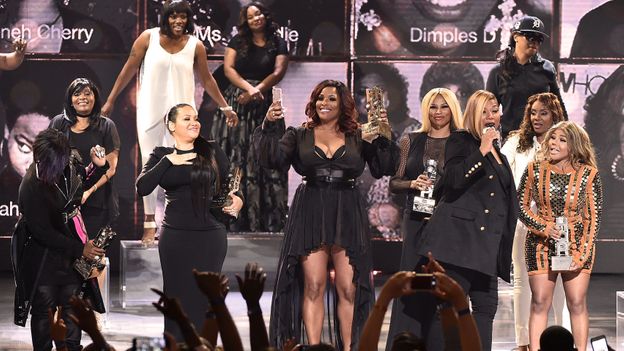
The state of mainstream music may also have an effect on how female rappers are viewed in the eyes of hip-hop listeners. We’re slowly whittling away at the archaic thought-process that one female rapper at a time can be highlighted (This was a non-issue in the ’80s and early ’90s, but following the well-documented Foxy Brown and Lil’ Kim feud in the late ’90s, there seemed to be a battle for mainstream supremacy between hip-hop’s leading ladies until recently). Yet, it appears that the topic of aesthetic comes into play when discussing who gets attention from mainstream audiences.
As history shows, female rappers who fit the stereotype of a video vixen – buxom and scantily-clad – receive more mainstream attention. Hillyer says that while there is more acceptance regarding variety from a sonic standpoint, the media emphasises certain visual aesthetics over others.
Aesthetic and artistry are not mutually exclusive, yet, those seen as the antithesis of the stereotypical female rap aesthetic are not highlighted as frequently, despite the quality of their work. This is why mainstream will tend to focus their attention on a Cardi B more than a Chika today, or a Lil’ Kim more than a Missy Elliott in days past.
“This issue has the power to influence – and sometimes even determine – a female rapper’s standing in the hip-hop race,” Hillyer says. “That’s not to say female rap artists should ‘tone down’ the raciness of their image, or shrink away from their sexiness.”
So, there’s a chance that casual rap fans aren’t exploring the genre in more depth, or discovering female MCs outside of mainstream influence. This is a detriment to these artists and the listeners, who won’t be hearing the true breadth of what the genre has to offer. However, streaming services such as Spotify and Apple Music have allowed serious music fans to make their own discoveries without mainstream influence.
“Audiences are engaged with [an artist’s] ascension because they have cultural memory of their first mixtapes on SoundCloud to the release of musical projects on a record label,” Crumpton says. Had social media and streaming been as prevalent in hip-hop’s highly prolific years (the 1990s and 2000s), many female rappers may have benefitted. Murphy believes that artists such as MC Lyte, Mia X, and Yo Yo could have benefitted from the invention of streaming, which could have resulted in their inclusion on “best-of” lists.


